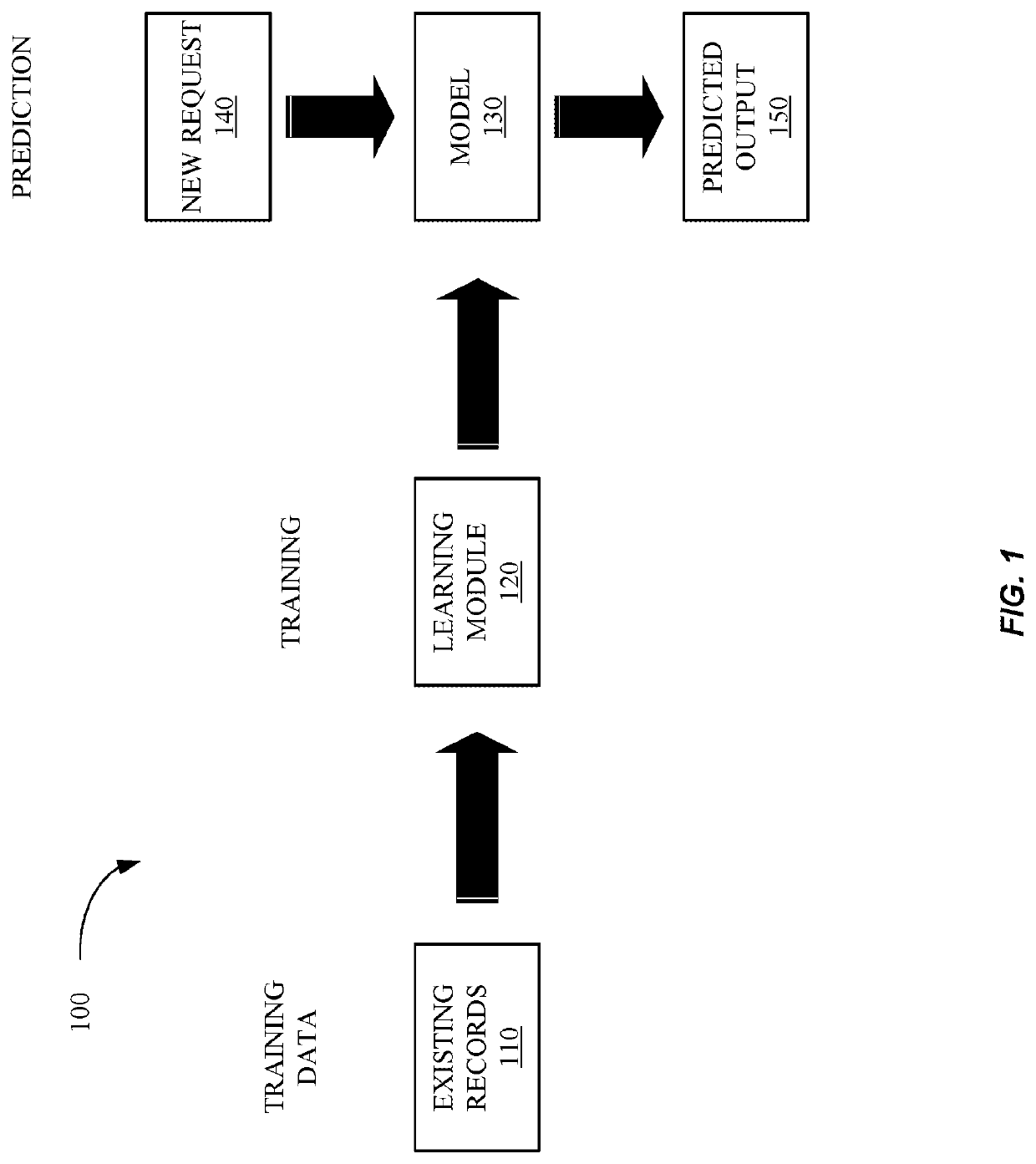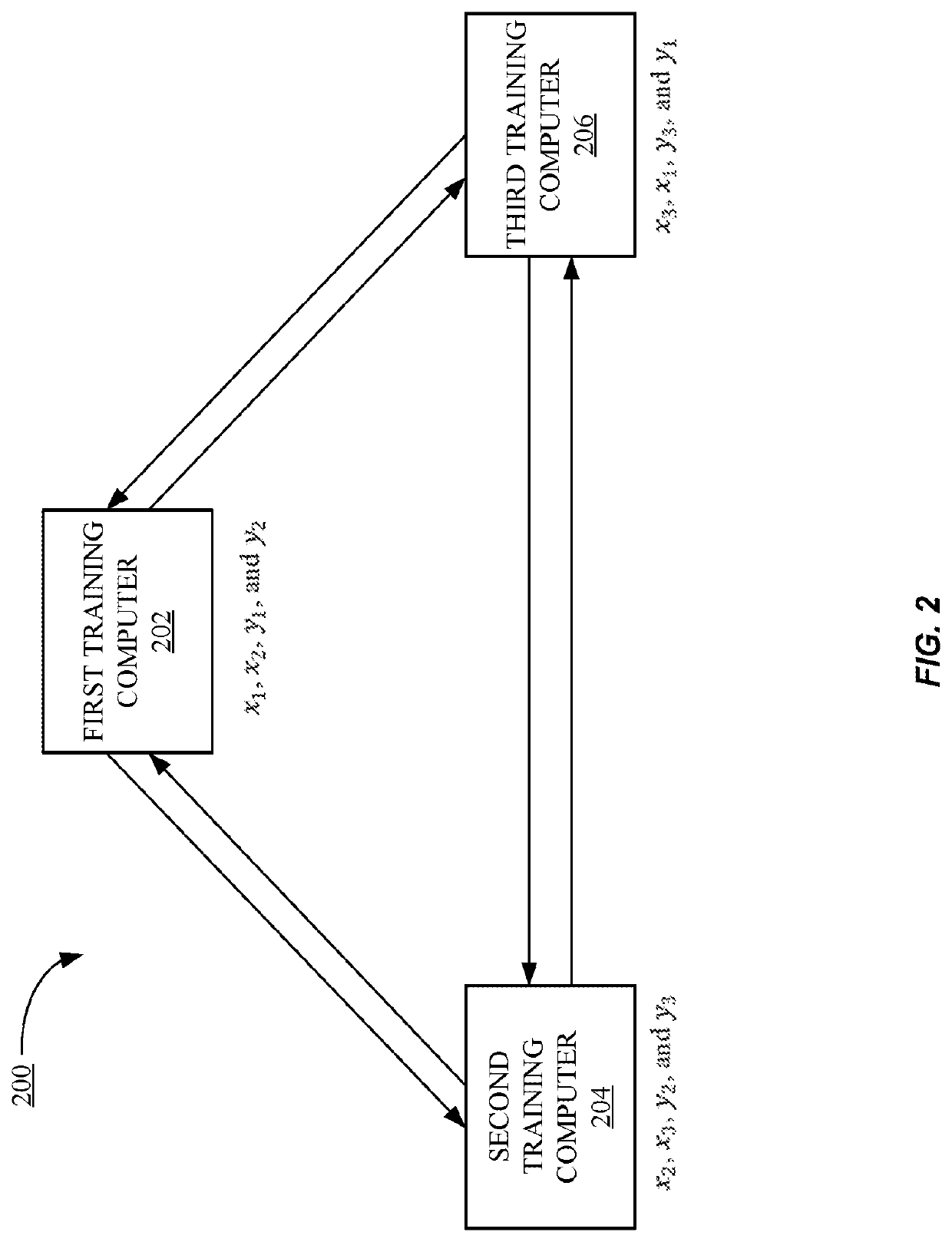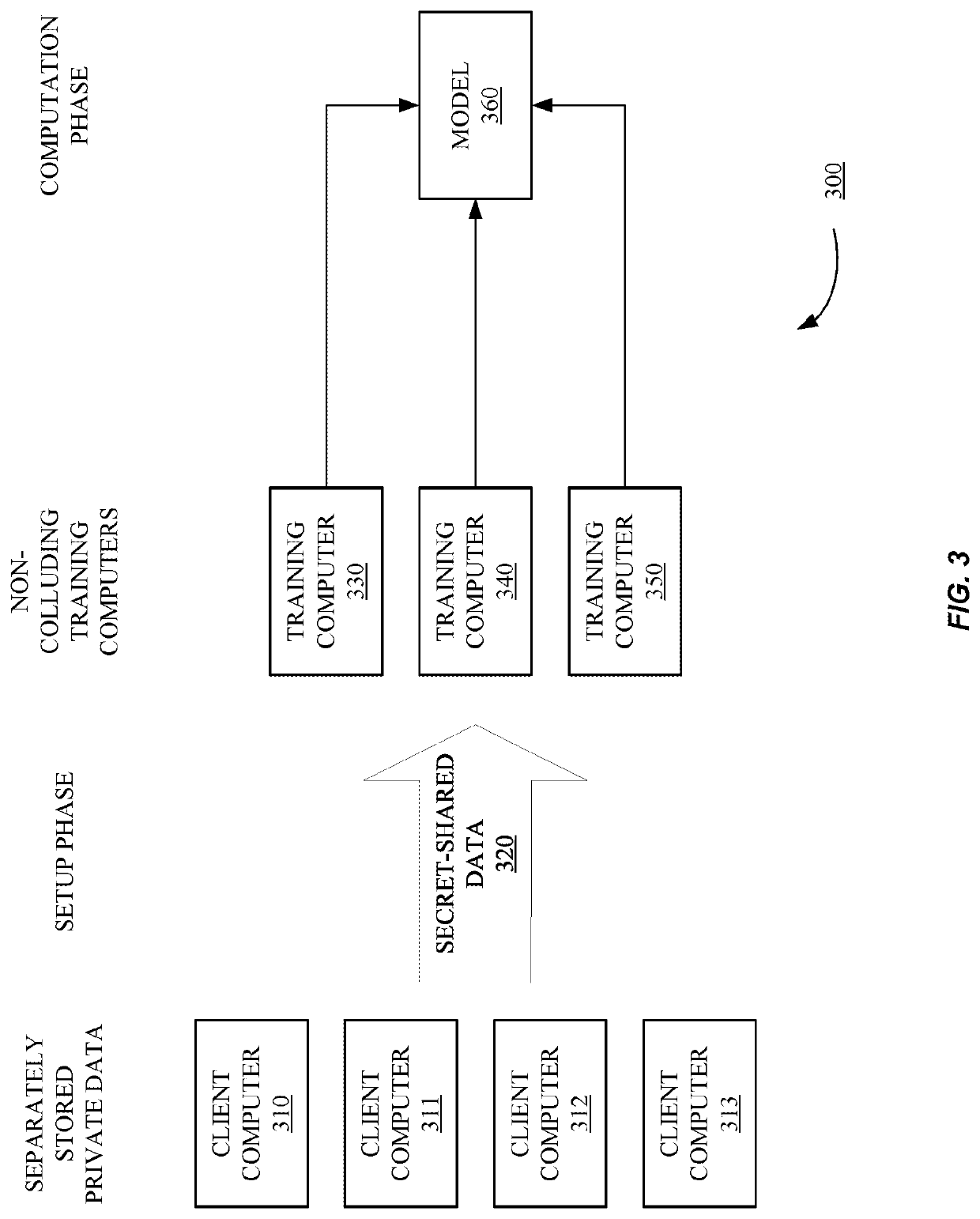Privacy-preserving machine learning in the three-server model
- Summary
- Abstract
- Description
- Claims
- Application Information
AI Technical Summary
Benefits of technology
Problems solved by technology
Method used
Image
Examples
Embodiment Construction
[0048]Privacy-preserving machine learning is difficult to implement efficiently. The present disclosure provides techniques for efficient implementation that allows multiple client computers (e.g., from different companies, possibly competitors) to use their private data in creating a machine learning model, without having to expose the private data. The private data from multiple sources can be secret-shared among three or more training computers. For example, different parts of a single data item of the private data can be stored on different training computers such that the data item itself is not known to any one of the training computers.
[0049]The training of the model can use iterative techniques that optimize the predicted result based on a set of training data for which the result is known. As part of the training, the secret-shared parts can be multiplied by weights and functions applied to them in a privacy-preserving manner. Such multiplications and secret-sharing can be ...
PUM
 Login to View More
Login to View More Abstract
Description
Claims
Application Information
 Login to View More
Login to View More - R&D
- Intellectual Property
- Life Sciences
- Materials
- Tech Scout
- Unparalleled Data Quality
- Higher Quality Content
- 60% Fewer Hallucinations
Browse by: Latest US Patents, China's latest patents, Technical Efficacy Thesaurus, Application Domain, Technology Topic, Popular Technical Reports.
© 2025 PatSnap. All rights reserved.Legal|Privacy policy|Modern Slavery Act Transparency Statement|Sitemap|About US| Contact US: help@patsnap.com



